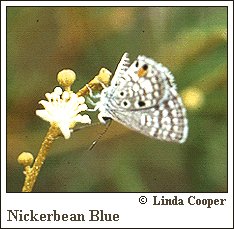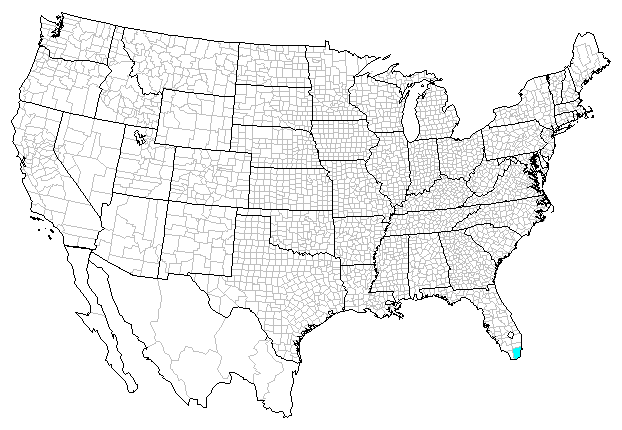 |
 

 |



Nickerbean Blue (Hemiargus ammon [Lucas])
Wing span: 7/8 - 1 1/8 inches (2.2 - 3 cm).
Identification: Upperside mostly bright blue; female hindwing with orange spot at lower edge. Underside of both sexes with only 3 basal black spots. One of two eyespots at corner of outer margin is always capped with red. Very similar to the Miami Blue.
Life history: Eggs are laid singly on flower buds of host plant. Caterpillars feed on flowers and may live inside the pods, eating seeds.
Flight: Throughout the year in Florida. Adults are in reproductive diapause during the winter generation from December-April.
Caterpillar hosts: Nickerbean (Cesalpinia bahamensis).
Adult food: Flower nectar including that of Croton.
Habitat: Openings and edges of tropical hardwood hammocks.
Range: Big Pine Key, Florida and West Indies.
Conservation: Populatipon on Big Pine Key is only U.S. population and should be protected from extirpation by aerial spraying for mosquitoes.
The Nature Conservancy Global Rank: G4G5- Apparently or demonstrably secure globally, though it may be quite rare in parts of its range, especially at the periphery.
Management needs: Preserve habitat of caterpillar plant and nectar sources.
References:
Glassberg, J. 1999. Nickerbean blues arrive in Florida. American butterflies
7(2): 22-25.
Smith, D.S., Miller, L.D. and J.Y. Miller. 1994. The butterflies of the West
Indies and Florida. Oxford University Press, New York. 264 pages.
Author: Paul A. Opler

